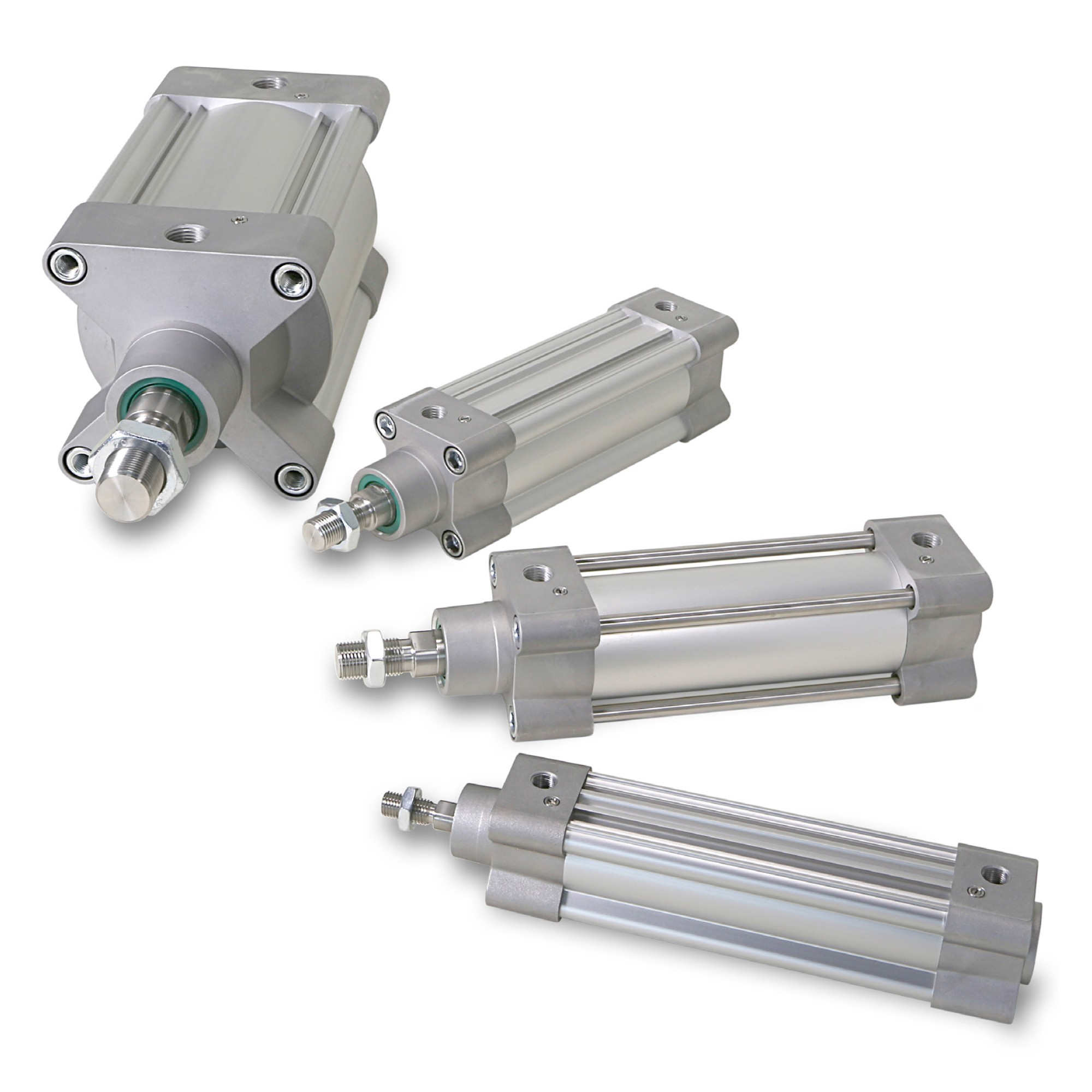
From enhancing the efficiency of manufacturing and assembly lines to playing critical roles in automotive and aerospace applications, pneumatic cylinders are versatile devices that find use in tasks ranging from material handling and logistics to medical equipment and robotics.
Since pneumatic cylinders are found to be involved in many aspects of industrial applications, let’s delve deep into their knowledge base to see how they are an integral part.
WHAT ARE PNEUMATIC CYLINDERS?
Pneumatic cylinders, powered by compressed air, serve as indispensable workhorses across diverse industries.
They are also called air cylinders since they use compressed air to generate force in linear motion.
These devices consist of a piston, piston rod, and cylinder.
WORKING PRINCIPLE
The basic working principle of a pneumatic cylinder involves the conversion of potential energy stored in compressed air into kinetic energy. When air is supplied to one side of the piston, it creates a pressure differential, leading to the movement of the piston and, consequently, the rod. This linear motion is harnessed for various mechanical operations.
WHAT ADVANTAGES DO PNEUMATIC CYLINDERS OFFER?
The reason why SS Hussain’s pneumatic cylinders are preferred is because they are simple to use and are a cost-efficient solution to move loads linearly and at rapid speed, making them commonly used in the automation of machines and industrial processes.
Compressed air is a clean and safe power source, particularly in industries with concerns about contamination or fire hazards.
It’s also appropriate to mention the types of pneumatic cylinders. There are two types:
SINGLE-ACTING CYLINDER
In single-acting pneumatic cylinders, compressed air enters through one of the cylinder caps, filling only one side of the chamber. The pressure leads the piston and rod assembly to move linearly in one direction while compressing the spring fitted around the piston rod.
Once the piston rod reaches its maximum thrust, the spring recoils back bringing the piston and rod assembly with it.
DOUBLE-ACTING CYLINDER
There is compressed air on both sides of the piston in double-acting cylinders. This lets the piston and rod combination move in both directions. When compressed air is added to the other side of the cylinder, the assembly moves to the side with less internal pressure and then goes back to where it started. Being that the area on the piston’s side near the rear-end cap is bigger than the area on the other side, the expansion force is greater than the retraction force. The retraction speed is also faster than the extension speed. This is because the rod reduces the useful volume, which lets the chamber fill up with compressed air more quickly.
TELESCOPIC CYLINDER
Telescoping cylinders, or telescopic cylinders, can function as either single or double-acting units.
In this design, we have a piston rod placed inside a set of hollow stages. These stages have different sizes, increasing in diameter as you go along. When you activate it, the piston rod and the following stages extend outward, creating a segmented piston-like appearance. The main benefit is that it allows for a much longer stroke than a single-stage cylinder of the same retracted length.
PNEUMATIC CYLINDER REPAIR IN PAKISTAN
If your cylinder is exhibiting problems like leakage or decreased efficiency, the skilled professionals at SS Hussain can identify the issue and apply effective solutions. Our repair services cover various issues, such as piston rod scoring, seal replacement, barrel honing, and more. Using top-notch components, we prioritize the durability and dependability of your repaired cylinder.
We supply pneumatic cylinders from renowned International brands such as FESTO and SMC, ensuring that you receive nothing but the finest quality. Along with that, the only owners of Pneumatic HTC Brand Cylinders at SS HUSSAIN & SONS offer you a wide range of models in Pneumatic Cylinders.
